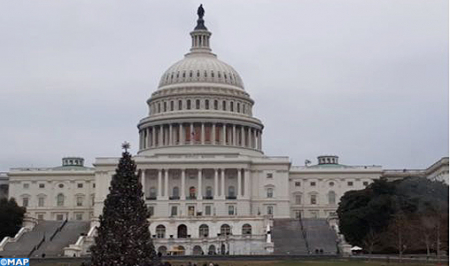Federal and state elected offices up and down ballot are on the line as the US heads into the 2022 midterm elections scheduled for November 8. The campaign rhetoric can be brutal. In campaign ads and on the stump, Republicans have blamed Democrats for inflation and the high cost of living from the gas pump to the grocery store. Democrats have cast Republicans as too extreme on abortion and as a threat to democracy. While anyone can pretty much find a poll to support the position they want, this reflects the general posturing and the reflection in voters concerns.
September polls conducted by National Public Radio/PBS and Data for Progress indicated that overall around 30% of American voters identified inflation as their top issue. Interestingly, NPR’s poll showed that this is a decrease of seven points from the last time the question was asked in July.
The second most important issue identified was reproductive rights (in shorthand, abortion) at 22%, up 4 points since July, according to NPR.
Broken down by party, Republicans are prioritizing inflation, jobs, and the economy, followed by immigration. Democrats view women’s reproductive rights as the top electoral issue, followed by climate change and gun control. For independents, inflation is also the top issue, but abortion ranks a close second.
This first article in a series exploring voter concerns addresses what’s at stake for the US with respect to the current high inflation and uncertain economy and gives a snapshot of inflation and other economic measures that may be influencing voters.
Inflation
Inflation is a measurement of the rate at which prices increase, and it affects consumers’ purchasing power. When inflation is low, it means demand is too weak to push up prices. When inflation is high, it means you’ll pay more for the same goods and services that you paid for last month or year. If you can’t buy as many good or services as you did before inflation, your quality of living does down.
Under the Consumer Price Index (CPI), the US inflation rate was high at 8.3% year over year in August 2022, having cooled from a 40-year high in June of 9.1%.
Normally, a 2% inflation rate is considered by economists to be healthy because consumers expect prices to rise. And when prices are going up, consumers tend to buy now rather than wait, and the increased demand spurs economic growth.
Other factors, such as gross domestic product (GDP), job growth, and the stock market also affect the economy and voter perception.
GDP
In 2021, the first year of Biden’s presidency, US GDP grew 5.7% after decreasing 3.4% in 2020 the year the COVID-19 pandemic hit. Spurred by several COVID-19 relief and stimulus bills, the economy added 6.7 million jobs in 2021, rebounding from 9.3 million lost jobs the year before. The average annual unemployment rate in 2021 was 5.4%, about 2.7 percentage points lower than in 2020 but 1.7 points higher than in 2019.
Jobs
In April 2020 at the beginning of the pandemic, the economy lost 1.3 million jobs in the manufacturing industry, but manufacturing has steadily been gaining jobs since then. The unemployment rate was 3.7% in August, slightly above the 3.5% seen before the pandemic, and overall, there were 6 million unemployed people. Job seekers have had the upper hand in recent months because there are nearly two available jobs for every unemployed person. In August, the economy added 315,000 jobs as employers continued to hire steadily, and employment in the US is now above its pre-pandemic levels. Based on data released on Thursday, the labor market remains robust, with worker shortages in some areas.
Stock Market
The stock market is an important economic indicator. It not only reflects corporate profitability, but it indicates where investors think the economy is going. The stock market recovered surprisingly well after the pandemic, with the S&P 500 continuously hitting new highs between October 2020 and December 2021. However, driven by factors such as high inflation and the war in Ukraine, U.S. stocks fell hard last Friday, closing out a brutal week, month, and quarter. The Dow Jones industrial average fell 500 points on Friday and closed below 29,000 for the first time since November 2020. The S&P 500 fell to its lowest level in two years. All three U.S. indexes are down at least 1.5 percent.
In short, the economic indicators are volatile. Americans are still feeling the pinch of fuel and gasoline prices now on the rise again after declining for nearly 100 straight days up until the third week of September. The average price of gas across the US is $3.82 per gallon (about 3.7 liters), although California is averaging a whopping $ 6.29 a gallon, causing Democrat Governor Gavin Newsome to announce an investigation of the oil companies.
But despite this, consumer confidence has continued to rise, according to the Consumer Confidence Index released last week by The Conference Board.
Lynn Franco, its Senior Director of Economic Indicators, said, “Consumer confidence improved in September for the second consecutive month supported in particular by jobs, wages, and declining gas prices.”
On Friday, a new government report showed consumer spending and personal incomes both rose in August, even while inflation remained high. In short, although the economy shrank in the first two quarters of the year, it doesn’t appear that the economy is in a recession — yet. But large companies such as Apple, Walmart, and Target are bracing for an anticipated slump in consumer spending, launching holiday discounts earlier than usual this year.
In July, President Biden signed the landmark Inflation Reduction Act into law. Since then, his approval rating has marginally increased from 36% in July to 41% in September. Although his approval rating may be a factor in electing Democrats overall, Biden is not on the ballot in November.
History teaches that in the first midterm election after a Presidential election the incumbent majority party (the Democrats) loses seats. The continued relevance of the economy to likely voters shows that Democrats are still facing an uphill battle in the midterm elections. However, the importance of women’s reproductive rights and Supreme Court’s revocation of all citizens’ right to privacy to the Democratic base, as well as mobilization of US voters abroad, may improve the Democrats’ chances.
In the meantime, Republicans are spending millions on TV ads for the midterms, despite a slowdown in fundraising during July and August.
The Economist predicts as of September 30th that the race for the House of Representatives will be very close, but that the Democrats will keep their majority in the Senate. With almost six weeks to go, the outcome at this moment in time is anybody’s guess.










